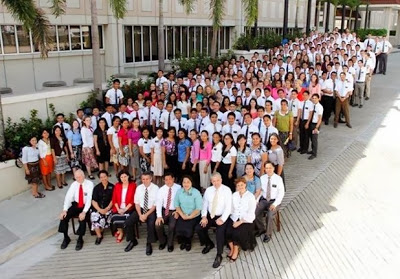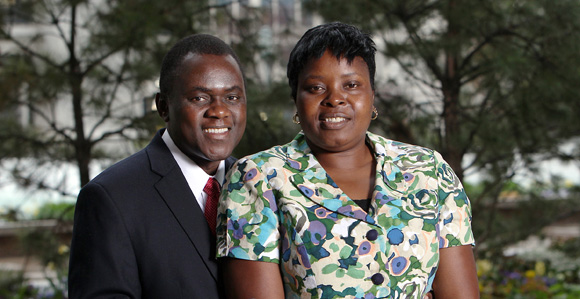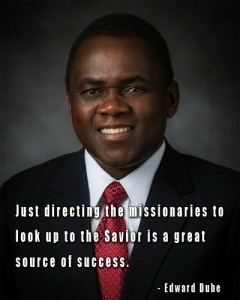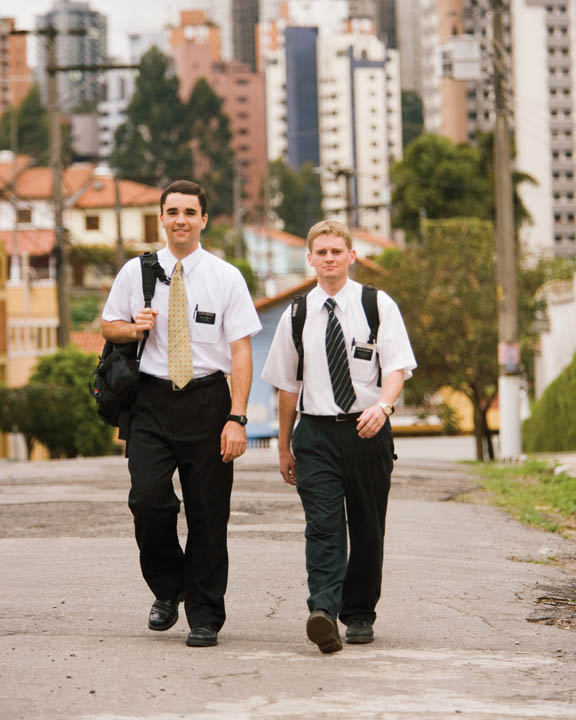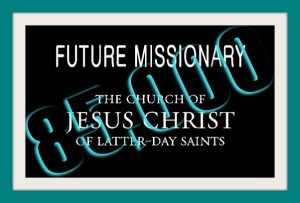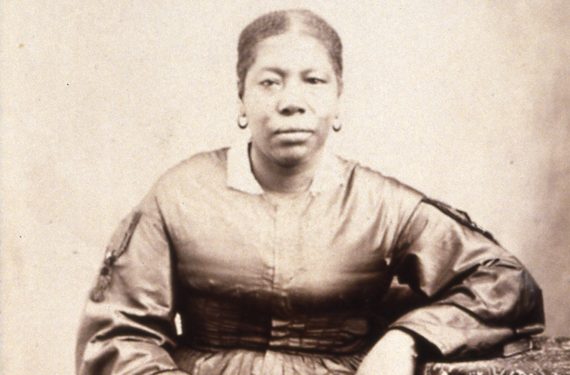
Jane Elizabeth Manning James – Black Mormon Pioneer
The word “pioneer” is basically defined as a person who is among the first to explore or settle a new country or area. A synonym for the word “pioneer” is the word “trailblazer” which perfectly describes Jane Elizabeth Manning James, an early African-American member of The Church of Jesus Christ of Latter-day Saints (inadvertently referred to as the “Mormon” Church by the media and others).
A Young Seeker of Truth
 Jane Elizabeth Manning James was born to Isaac and Eliza Manning in Wilton, Connecticut, on 22 September 1822. At the young age of six, she went to live with the family of Joseph Fitch, a wealthy White farmer in Connecticut. She was raised by the Fitch’s daughter and lived as a servant in their home, but she was not a slave. She was a member of the Presbyterian Church, and it was there that she became grounded in Christian principles which later helped to prepare her to receive and accept the message of the gospel of Jesus Christ which was preached by two Mormon missionaries traveling through the area where she lived. In her own words, Jane recounted her conversion to Mormonism:
Jane Elizabeth Manning James was born to Isaac and Eliza Manning in Wilton, Connecticut, on 22 September 1822. At the young age of six, she went to live with the family of Joseph Fitch, a wealthy White farmer in Connecticut. She was raised by the Fitch’s daughter and lived as a servant in their home, but she was not a slave. She was a member of the Presbyterian Church, and it was there that she became grounded in Christian principles which later helped to prepare her to receive and accept the message of the gospel of Jesus Christ which was preached by two Mormon missionaries traveling through the area where she lived. In her own words, Jane recounted her conversion to Mormonism:
When about fourteen years old, I joined the Presbyterian Church—yet I did not feel satisfied. It seemed to me there was something more that I was looking for. I had belonged to the [Presbyterian] Church about eighteen months when an Elder of The Church of Jesus Christ of Latter-day Saints, [who] was traveling through our country, preached there. The pastor of the Presbyterian Church forbade me going to hear them as he had heard I had expressed a desire to hear them; nevertheless I went on a Sunday and was fully convinced that it was the true gospel he presented and I must embrace it. The following Sunday I was baptized and confirmed a member of The Church of Jesus Christ of Latter-day Saints. [1]
A Stalwart Pioneer
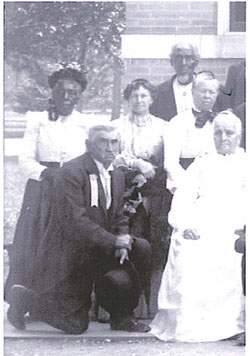 After hearing the Mormon Elder, Charles Wandell, preach the message of the restored gospel, Jane shared the message with other members of her family who were also baptized into The Church of Jesus Christ of Latter-day Saints.
After hearing the Mormon Elder, Charles Wandell, preach the message of the restored gospel, Jane shared the message with other members of her family who were also baptized into The Church of Jesus Christ of Latter-day Saints.
In 1843, one year after she was baptized and as preparations were being made for the Latter-day Saints in the area to immigrate to Nauvoo, Illinois, Jane and eight members of her family joined the larger group. Again in her own words, Jane recounted the details of the arduous journey:
One year after I was baptized, I started for Nauvoo with my mother, Eliza Manning, my brothers Isaac Lewis, and Peter, my sisters, Sarah Stebbins and Angeline Manning, my brother-in-law Anthony Stebbins, Lucinda Manning (a sister-in-law), and myself in the fall of 1840 [sic]. We started from Wilton, Connecticut, and traveled by canal to Buffalo, New York. We were to go to Columbus, Ohio before our fares were to be collected, but they insisted on having the money at Buffalo and would not take us farther. So we left the boat and started on foot to travel a distance of over eight hundred miles.
We walked until our shoes were worn out, and our feet became sore and cracked open and bled until you could see the whole print of our feet with blood on the ground. We stopped and united in prayer to the Lord; we asked God the Eternal Father to heal our feet. Our prayers were answered and our feet were healed forthwith. [1]
When Jane and her family finally arrived in Peoria, Illinois, they were faced with opposition once again when the local authorities threatened to imprison them because they could not produce their “free papers” – papers stating that they were free Blacks and not slaves. After a time, they were able to convince the authorities that they had never been slaves, and therefore did not need “freedom papers,” and were allowed to continue on their way.
The Faith That Sustained Them in Their Journey
Frightened at the threat of imprisonment, they were anxious to move on but were slowed by a river. Seeing no bridge, they forded the river by walking into the stream until the cold water swirled around their necks. Afterward—wet, cold, frightened, and hungry—they pressed on their way, sleeping sometimes in the shelter of a log cabin, other times in the open, even when the snow fell. Jane remembered the faith that sustained them when she said, “We went on our way rejoicing, singing hymns, and thanking God for his infinite goodness and mercy to us, in blessing us—protecting us—and healing our feet.” As they approached La Harpe, Illinois, they prayed for a sick baby and it was healed. It was an exhilarating experience that gave them new hope as they entered the city of Nauvoo. [2]
Upon their arrival in Nauvoo, the welcome from the Mormons was not as warm as they had expected. In fact, as Jane recalls, her family of recent Black converts who had traveled many miles by foot to join with the Saints, was repudiated by some of the members.
A Prophet’s Warm Welcome
However, the Prophet Joseph Smith welcomed the wearied travelers with open arms into his home. She recalled that “Brother Joseph took a chair and sat down by me and said, ‘You have been the head of this little band, haven’t you?’ I answered, ‘Yes sir.’ He then said, ‘God bless you.’ “[2] Joseph assured the Mannings that they were among friends and would be protected, and invited them to stay at the Mansion House until homes could be found for them.
Within a week, members of the family were able to find homes and jobs, and on the morning that they were leaving Joseph’s home, he found Jane weeping and asked why she was upset. She responded, “The folks have all gone and got themselves homes, and I have got none.” [2]
“Yes, you have,” he said, “you have a home right here if you want it. You mustn’t cry, we dry up all tears here.” He left the room and returned shortly with Emma. “Sister Emma,” he said, “here is a girl that says she has no home, haven’t you a home for her?”
Emma offered Jane the same warm hospitality she had given scores of others in similar need. Satisfied that the tears were over, the Prophet left Emma and Jane to arrange the details. Jane was a willing worker and told Emma of her skills. She could wash and iron clothes and was a good cook and housekeeper. “When you are rested,” Emma said, “you may do the washing, if you would just as soon do that.” Jane began the following morning. [2]
Jane remained part of the Smith household for several months. She enjoyed the associations of Joseph and Emma’s family, and she often visited with Lucy Smith, Joseph’s mother. She soon became friends with other members of the household including Sarah and Maria Lawrence and Eliza and Emily Partridge.
An Eternal Family of Her Own
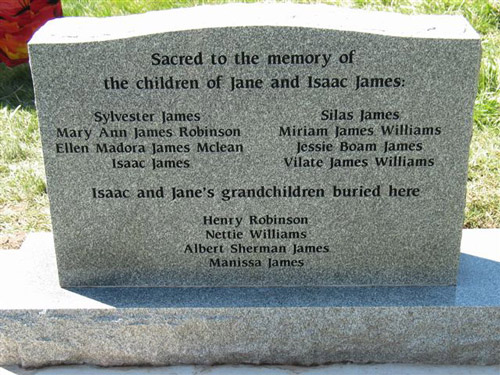 After the Prophet was martyred in the Carthage Jail in Carthage, Illinois, she went to live in the home of Brigham Young. It was there that she met and married Isaac James, a native of New Jersey, who had converted to Mormonism in 1839 at the age of 19. After they were married, the couple left for the Utah territory. In 1846, Jane gave birth to her second son while at Winter Quarters, Nebraska. Isaac and Jane Manning James and their sons Sylvester and Silas were the first free blacks to settle in Utah. They immigrated with the Ira Eldredge Company, and arrived in the Salt Lake Valley on 19 September 19 1847. In the spring of 1848, Isaac and Jane became the parents of Mary Ann, the first Black child born in Utah.
After the Prophet was martyred in the Carthage Jail in Carthage, Illinois, she went to live in the home of Brigham Young. It was there that she met and married Isaac James, a native of New Jersey, who had converted to Mormonism in 1839 at the age of 19. After they were married, the couple left for the Utah territory. In 1846, Jane gave birth to her second son while at Winter Quarters, Nebraska. Isaac and Jane Manning James and their sons Sylvester and Silas were the first free blacks to settle in Utah. They immigrated with the Ira Eldredge Company, and arrived in the Salt Lake Valley on 19 September 19 1847. In the spring of 1848, Isaac and Jane became the parents of Mary Ann, the first Black child born in Utah.
BYU Play Celebrates the Life of Jane Elizabeth Manning James
As Black History month draws to a close (in February 2014), Brigham Young University (BYU) is presenting the award-winning play “I Am Jane” which celebrates the life of Black Mormon pioneer, Jane Elizabeth Manning James. The cast of the play consists of nearly all Black actors. The play will be performed nightly from 25 February through 1 March at 7:30 PM, with a 2:00 PM matinee on Saturday in the Joseph F. Smith Building on the Provo, Utah campus. All characters in the play portray actual historical figures, and the script includes actual words that were spoken by the figures portrayed as often as possible.
With only 265 students of African lineage out of a student body of 30,000 students, finding enough actors to fill all of the roles for the presentation was not an easy task. So, why go through the trouble of putting on such a production? Playwright and Professor, Margaret Young, stated, “Simply because it matters, and this year it matters even more than it has previously.” [3] She notes that The Church of Jesus Christ posted a new online gospel topic on “Race and the Priesthood” which addressed the previous Priesthood ban which prohibited Black males from holding the Priesthood, and Blacks in general from participating in temple rituals. Although the ban ended in 1978, justification for the ban has continued for decades.
“Today, the church disavows the theories advanced in the past that black skin is a sign of divine disfavor or curse, or that it reflects actions in a premortal life; that mixed-race marriages are a sin; or that blacks or people of any other race or ethnicity are inferior in any way to anyone else,” the church statement says. “Church leaders today unequivocally condemn all racism, past and present, in any form.” [3]
Young further states that those involved in the production “hope that it will inspire the empathetic imagination in all who see it, that all may be edified and also challenged. Janes’ faith, which saw beyond any racial distinctions should mentor our faith.” [3]
Jane Elizabeth Manning James died on 16 April 1908 in Salt Lake City. A special monument to her is located in the Salt Lake City Cemetery, close to her grave site, to commemorate her life and faith.
Resources:




